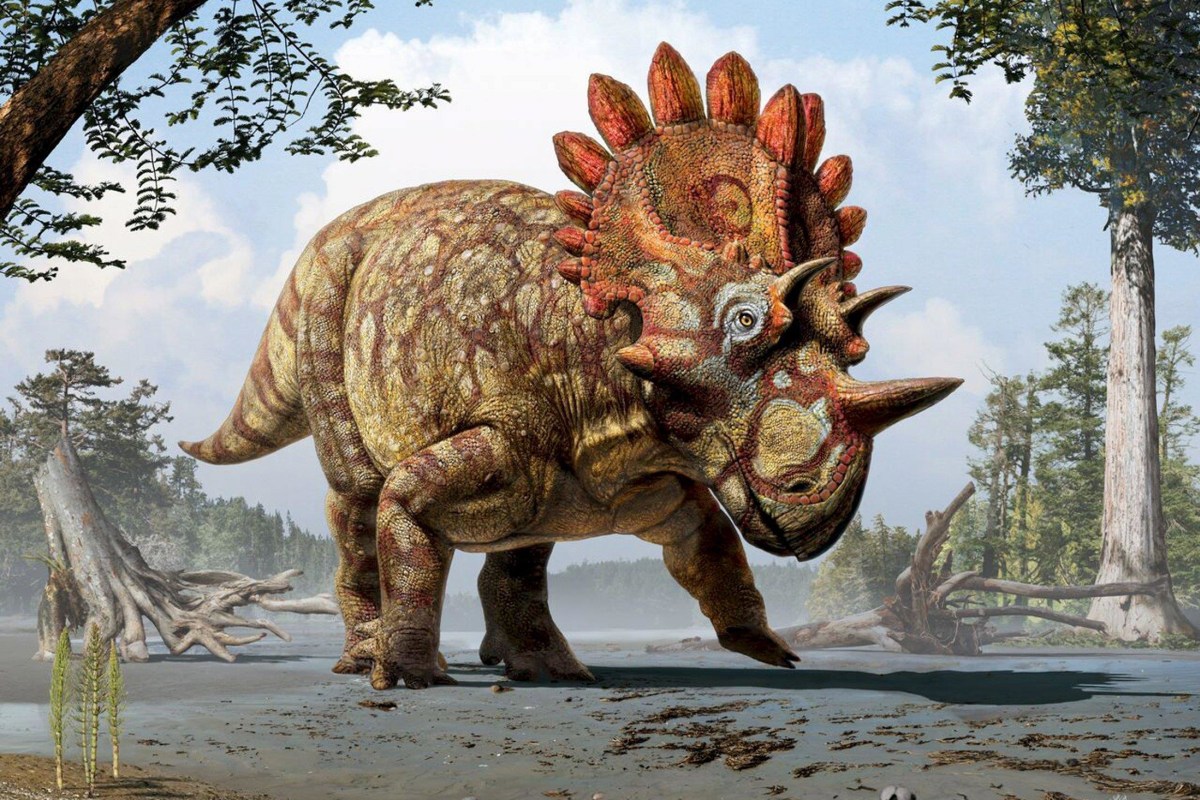 |
| The skull of the 70 million year old chasmosaurine ceratopsian Regaliceratops peterhewsi |
'From the onset we knew it was important,' said Caleb Brown from the Royal Tyrell Museum of Palaeontology, Alberta. 'However, it was not until the specimen was being slowly prepared from the rocks in the laboratory that the full anatomy was uncovered, and the bizarre suite of characters revealed.'
A set of pentagonal plates adorned the head frill, two small horns jutted out from above the eyes and a single large horn from the nose. The overall effect was rather crown-like and correspondingly the species was named Regaliceratops peterhewsi. The unique head ornamentation allowed its evolutionary relationships to be strongly identified. A close relative of Triceratops, Regaliceratops was part of a ceratopsian group known as the chasmosaurines. Its ornamentation, however, was closer to that found in centrosaurine ceratopsians. At 70 million years old it lived after the extinction of the centrosaurines, but the similarities in ornamentation point to an intriguing possibility: evolutionary convergence in dinosaurs.
 |
| An artist's impression of Regaliceratops peterhewsi |
That said, almost as soon as it evolved, Regaliceratops's rule came to an abrupt end due to that same asteroid. No amount of ornamentation could prevent the ceratopsians to withstand a world in ecological flux.